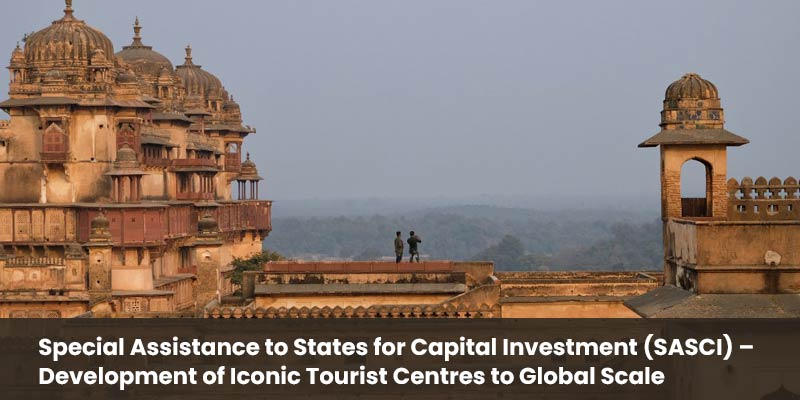- India
- Jul 22
- Sreesha V.M
What is SASCI scheme?
• The Ministry of Tourism issued operational guidelines for ‘Special Assistance to States for Capital Investment – Development of Iconic Tourist Centres to Global Scale’ (SASCI) with the objective to comprehensively develop iconic tourist centres in the country, branding and marketing them at global scale.
• The aim of this scheme is to infuse long term interest free loans for a period of 50 years to states for comprehensively develop iconic tourist centers in the country, branding, and marketing them at global scale.
• By infusing capital investment in the form of projects, the scheme further envisages growth of local economy and creation of employment opportunities through sustainable tourism projects.
• Salient features of this endeavour include developing end-to-end tourist experience, funding support to the shortlisted proposals, strengthening all points of the tourist value chain, harnessing quality expertise for design and development, sustainable operations and maintenance etc.
• The projects have been identified based on the project proposals submitted by state governments, its examination on the prescribed parameters such as connectivity to the site, tourism ecosystem, carrying capacity, sustainability measures, sustainable operation and management, project impact and value created, tourism marketing plans, etc.
• The states have been given a timeline of two years for completing the projects.
• While the implementation of projects sanctioned under SASCI scheme is being undertaken by state implementing agencies, the Ministry of Tourism has also formulated a mechanism to review the progress of sanctioned projects from time to time, in order to ensure seamless implementation of sanctioned projects.
Benefits:
• The initiative aims to ease pressure on high-traffic sites and promote a more balanced distribution of tourists across the country.
• By focusing on lesser-known destinations, the government hopes to enhance the overall tourism experience, boost local economies, and ensure sustainable growth in the tourism sector through a strategic approach to new project selection.
• By leveraging private sector expertise and capital at destinations, states can enhance public infrastructure, improve local amenities, and attract more tourists, ultimately boosting the regional economy and fostering long-term development.
• The Ministry of Tourism is also emphasising for community-based tourism that empowers local populations and preserves cultural heritage.
• By integrating sustainable practices into tourism planning, state governments will be able to ensure long-term growth while safeguarding natural and cultural resources by adopting best practices.
• The Ministry of Tourism is also encouraging state governments to integrate advanced technologies into their tourism projects.
• By adopting technology, states can streamline operations, optimise tourist flow, and provide sustainable, innovative solutions for growth in the sector.
(The author is a trainer for Civil Services aspirants.)

